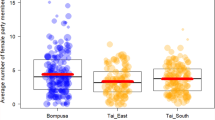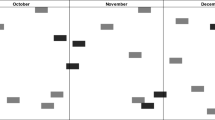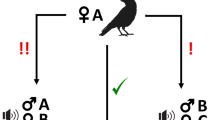Abstract
SOCIAL interaction between groups of Old World monkeys varies from peaceful mingling to marked aggression1–3. One constant feature, however, concerns the differing behaviour of immature and adult males; and these differences have been related to differences in male reproductive success at different stages of the life cycle. Immature and young adult males in multi-male groups of baboons and macaques frequently approach and interact with individuals outside their natal group, sometimes transferring from one group to another4–7. Two suggested causes of such group transfer are inability to gain access to oestrous females in the natal group and attraction to oestrous females in other groups8. In contrast, adult males—both in species with one-male social units and in species with multi-male groups—are frequently aggressive during intergroup encounters, often chasing or ‘herding’ members of their own group away from other groups7,9,10. Herding usually involves high-ranking adult males who are also the individuals who copulate most often10,11. Males are most likely to herd adult females, but rarely herd females who are lactating10–12. (Although occasional herding in gelada baboon one-male units has been reported13). Herding has been suggested both to mobilise individuals before group movement7 and to maintain a male's access to oestrous females over time10. To investigate the function of herding we observed the intergroup encounters of one multi-male group of baboons for 15 months. Our observations suggest not only that herding is correlated with differences in male reproductive success but also that it is related to changes in the female reproductive cycle and to long-term bonds between particular males and females.
This is a preview of subscription content, access via your institution
Access options
Subscribe to this journal
Receive 51 print issues and online access
$199.00 per year
only $3.90 per issue
Buy this article
- Purchase on Springer Link
- Instant access to full article PDF
Prices may be subject to local taxes which are calculated during checkout
Similar content being viewed by others
References
Altmann, S. A. & Atsmann, J. Baboon Ecology (University of Chicago Press Chicago, 1970).
Kawanaka, K., 14, 113–159 (1973).
Struhsaker, T. T. Behaviour 29, 83–121 (1967).
Hausfater, G. Folia primat. 18, 78–107 (1972).
Vessey, S. H. Folia primat. 8, 228–239 (1968).
Boelkins, R. C. & Wilson, A. P. Primates 13, 125–140 (1972).
Buskirk, W. H., Buskirk, R. E. & Hamilton, W. J. Folia primat. 22, 9–18 (1974).
Packer, C. thesis, Univ. Sussex (1977).
Saayman, G. S. Folia primat. 15, 36–57 (1971).
Kummer, H. Social Organization of Hamadryas Baboons (University of Chicago Press, Chicago, 1968).
Stoltz, L. P. & Saayman, G. S. Ann. Transvaal Mus. 26, 99–143 (1970).
Boese, G. K., In Socioecology and Psychology of Primates (ed. R. Tuttle) 205–230 (Mouton, The Hague, 1975).
Dunbar, R. & Dunbar, P. Contrib. primat. 6, (S. Karger, Basel, 1975).
Hausfater, G. Contrib. primat. 7 (S. Karger, Basel, 1975).
Cheney, D. L. Anim. Behav. (in the press).
Seyfarth, R. M. Behaviour (in the press).
Hall, K. R. L. Proc. zool. soc. Land. 139, 283–327 (1962).
Seyfarth, R. M. Behaviour (in the press).
Seyfarth, R. M. J. theor. Biol. 65, 671–698 (1977).
Author information
Authors and Affiliations
Rights and permissions
About this article
Cite this article
CHENEY, D., SEYFARTH, R. Behaviour of adult and immature male baboons during inter-group encounters. Nature 269, 404–406 (1977). https://doi.org/10.1038/269404a0
Received:
Accepted:
Issue Date:
DOI: https://doi.org/10.1038/269404a0
This article is cited by
-
An Approaching Motor Boat Induces Stress-Related Behaviors in Proboscis Monkeys (Nasalis larvatus) Living in a Riparian Area
International Journal of Primatology (2022)
-
Does behavioral flexibility contribute to successful play among juvenile rhesus macaques?
Behavioral Ecology and Sociobiology (2017)
-
Sexual coercion and courtship by male western gorillas
Primates (2016)
-
When good neighbors don't need fences: temporal landscape partitioning among baboon social groups
Behavioral Ecology and Sociobiology (2013)
-
The Function of Howling in the Ring-Tailed Lemur (Lemur catta)
International Journal of Primatology (2013)
Comments
By submitting a comment you agree to abide by our Terms and Community Guidelines. If you find something abusive or that does not comply with our terms or guidelines please flag it as inappropriate.



